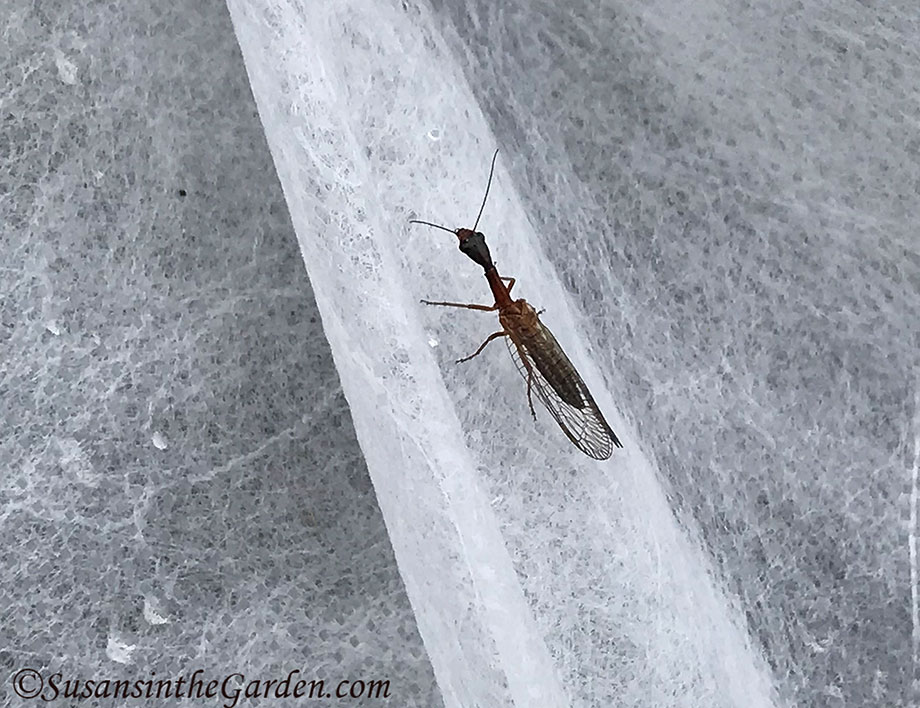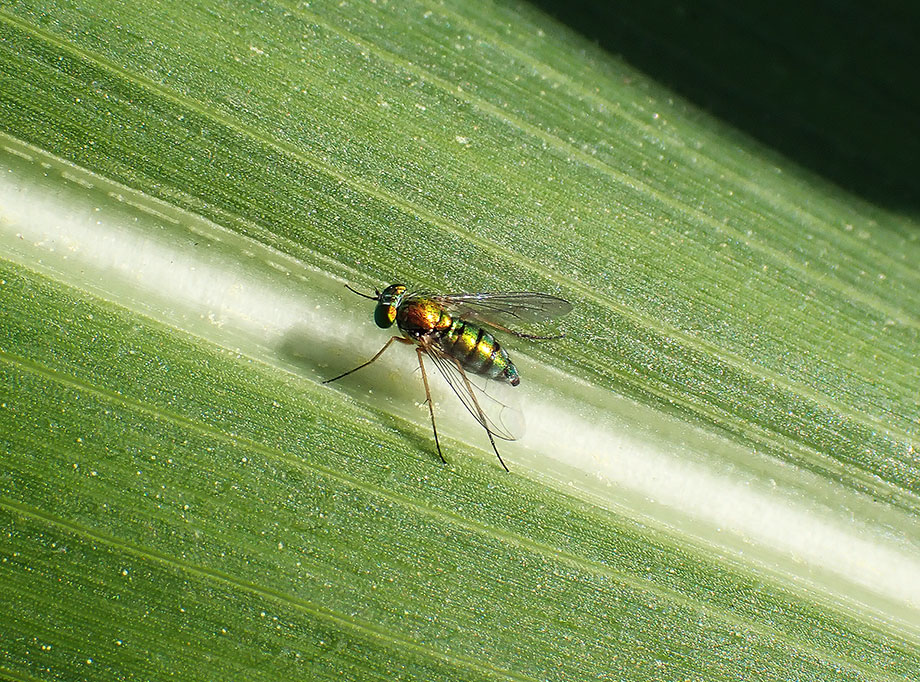May 9 Column: Attract Beneficial Insects

Bugs, bugs and more bugs! For my column, I wrote about how to attract beneficial insects to your garden. You can read it in today’s edition of The Spokesman-Review: How to attract beneficial bugs. (or you can read the text of my column at the bottom of this post)
As most of you know, my new book, The Vegetable Garden Pest Handbook, was officially released on Apr. 27. In it, I discuss all sorts of things you can easily do to attract beneficial insects.
I am fixated on all types of bugs. I now find that every trip out to the garden is an adventure! And I’m anxious to see both the good bugs AND the bad bugs… and also to see how they interact with each other. Incidentally, that’s a ladybug at the very top of this post.
Even though I feel like I’m pretty aware of what’s going on in my garden, it was a pleasant surprise to discover that I’ve got a whole bunch of good bugs in it. And as you’ll learn in my column, many that I’d never noticed before. All of this has underscored the importance of identifying which bug you’re dealing with and not making any hasty decisions about its fate.
This has made me want to attract beneficial insects to my garden and I’m hoping that my column will convince you this is a worthwhile goal for your garden as well. They are a gardener’s best allies.
This week’s video is also about bugs, but instead of beneficial bugs, it’s about the types of pests that cause damage to cabbage family crops (arugula, broccoli, Brussels sprouts, cabbage, cauliflower, kale, kohlrabi, radishes, rutabagas and turnips). And even more importantly, how to PREVENT damage to your crops by these nasties. I believe you’ll find it really interesting. Have a look:
And here is my column:
by Susan Mulvihill
When you walk into your vegetable garden, do you recognize the beneficial bugs that prey on damaging pests? It’s easy to feel like the only bugs out there are the bad guys, but that couldn’t be farther from the truth.
Approximately 1 million species of insects have been identified on our planet. Of those, only about 1 percent are considered damaging pests. That leaves 99 percent that are either beneficial or benign. Beneficial bugs include pollinators and predators that prey on the troublesome pests. Benign bugs don’t damage our crops but they aren’t predators either: for example, some assist in the decomposition of organic matter.
I don’t know if those statistics made you feel any better but when I first learned this a few years ago, it changed my outlook. When I walk into my garden, I feel a sense of excitement at the prospect of spotting beneficial bugs patrolling the area and perhaps consuming some of my garden’s worst enemies.
Examples of beneficials include ladybugs and their larvae, lacewings and their larvae, dragonflies and damselflies, ground beetles, hoverflies and even spiders. I know we humans think spiders are creepy but they are fantastic predators of aphids, asparagus beetles, cabbage worms, cutworms and squash bugs, just to name a few.
Last year, while writing The Vegetable Garden Pest Handbook, I had a heightened awareness of the bug population in my garden. For that project, I needed to provide 200 photos of them which seemed daunting at the time but helped me discover some new-to-me beneficial insects. Two of them were long-legged flies and snakeflies.
I’d never noticed long-legged flies before but they are beautiful metallic-green flies with black markings on their wings. At just ¼ inch in length, they have voracious appetites for aphids. One day I’d spot some aphids on our fava beans or corn plants and the next day they’d be gone. I’d see these flies everywhere and, after a bit of research, learned why they are a valuable addition to the garden. They also prey on spider mites and thrips. What more could a gardener ask for?
Snakeflies were the other surprise. Their inch-long bodies resemble lacewings – they are related – but they have a very long neck. I’d never noticed them before and their somewhat alarming appearance initially made me think they must be garden pests. It turns out they prey on aphids, mites and consume insect eggs. Obviously, one shouldn’t judge a bug by its appearance alone.
What can we gardeners do to attract more beneficials? First and foremost, don’t use pesticides. While those chemicals will kill damaging pests, they tend to be non-selective which means they will kill the predators that would have solved the problem for you in the first place. Also, my research has uncovered examples of many damaging pests that have developed resistance to pesticides which compounds the problem.
Plant a variety of flowers throughout your landscape. They will provide nectar and pollen for the good bugs throughout the season so they can breed and fulfill their role in the garden. In addition, provide good habitat for all sorts of beneficials by planting a diverse landscape filled with a mix of trees, shrubs, perennials, annual flowers and bulbs.
Keep leaf litter underneath your shrubs to provide a place for beneficials to overwinter. I know we gardeners like to have tidy landscapes but the end result will be worth it.
Susan Mulvihill is author of “The Vegetable Garden Pest Handbook.” She can be reached at Susan@susansinthegarden.com. Watch this week’s “Everyone Can Grow a Garden” video at youtube.com/susansinthegarden.


